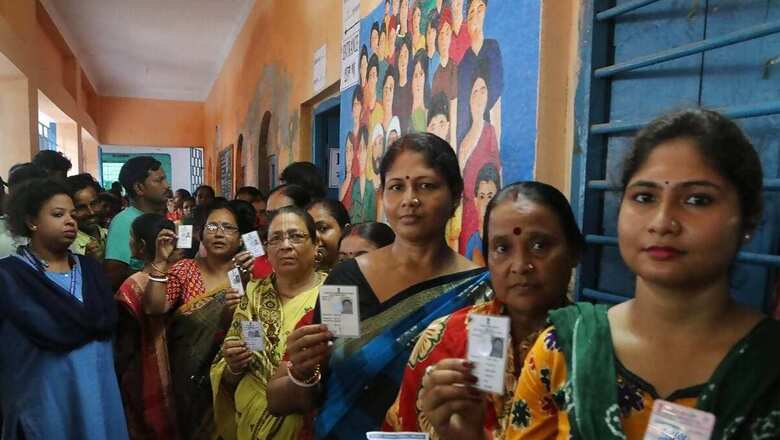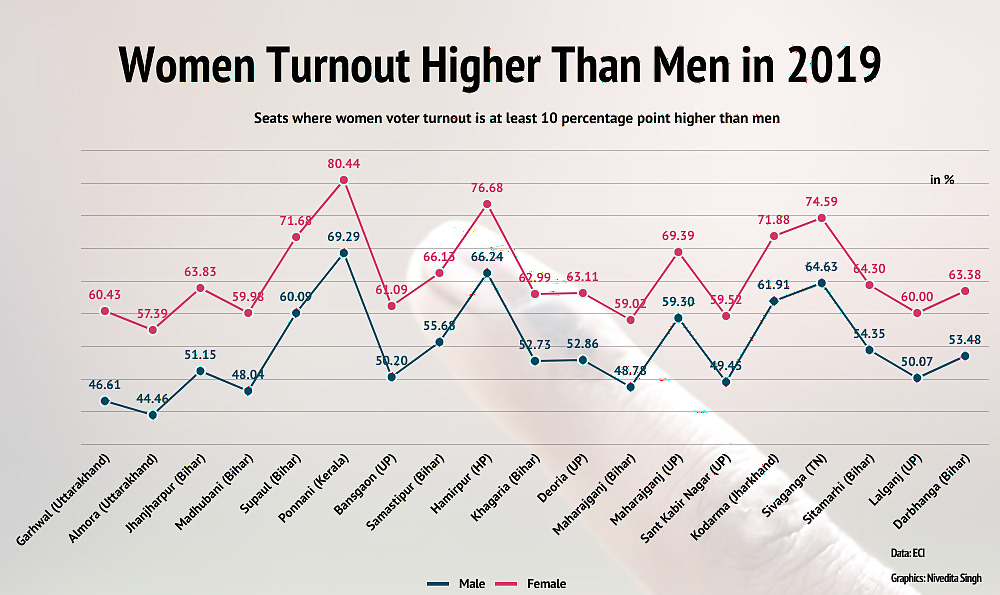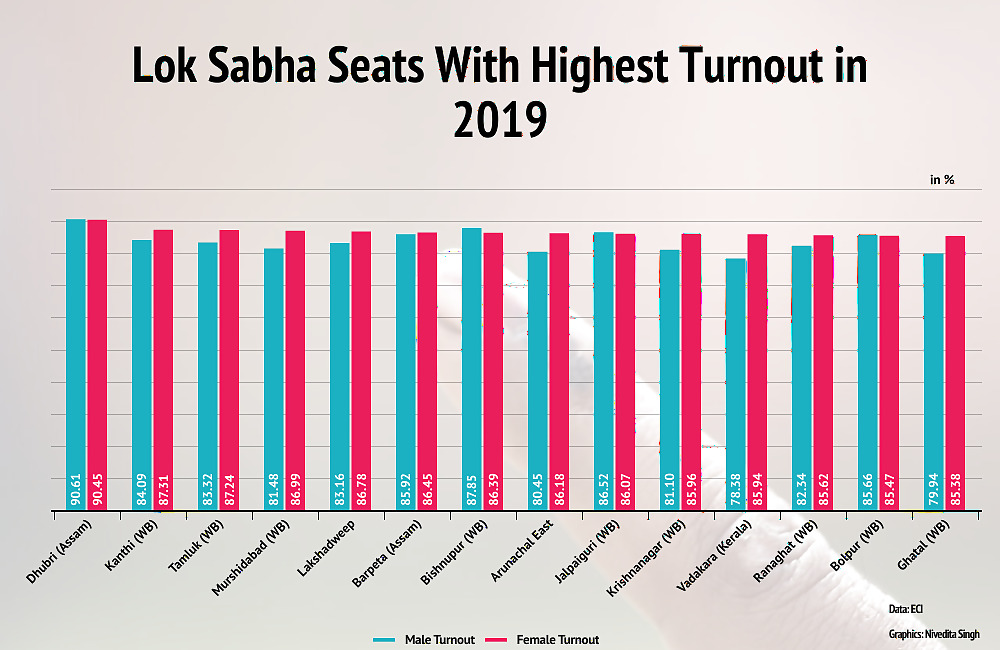
views
Women turnout is the percentage of women voters over female electors. In Garhwal Lok Sabha seat, women turnout was 60 per cent against male turnout of 46.61 per cent. In Almora it was 57 per cent against male turnout of 44.46 per cent. The turnout of women voters in the two constituencies was below the average turnout of women in the state at 64 per cent as well as the state average turnout of 61.88 per cent.
Apart from Garhwal and Almora, there are three more Lok Sabha seats in Uttarakhand — Tehri Garhwal, Nainital-Udhamsingh Nagar and Hardwar. In 2019, the state had 78.56 lakh electoral voters of which 37.13 lakh were women. Of the total 48.61 lakh votes polled in the state, 23.90 lakh were women against 23.87 lakh men. More than 80,000 votes were postal, the data from the Election Commission of India (ECI) shows.

The next three constituencies in the list were from Bihar – Jhanjharpur, Madhubani and Supaul. In these three seats, women turnout was more than general turnout as well as male turnout. In Jhanjharpur, the constituency turnout was 57.35 per cent of which female turnout was 63.82 per cent and male turnout was 51.15 per cent.
In Madhubani, the average turnout was 53.81 per cent. Male turnout was 48 per cent while female turnout stood at 59.98 per cent. In Supaul, women turnout was 71.68 per cent against male turnout of 60.09 per cent.
Of the 40 Lok Sabha seats in Bihar, 31 saw higher women turnout in 2019. Kerala, with 16 of 20 seats reporting higher female turnout, was next in line. In Odisha, 17 of 21 Lok Sabha seats had higher women turnout in 2019 Lok Sabha polls, the ECI data shows.
The numbers analysed by News18 also show that Assam’s Dhubri had the highest voter turnout, in general as well as gender-wise. Of the 18.58 lakh voters in the constituency, at least 16.85 lakh votes were polled — about 91 per cent turnout. While on this seat, the women turnout (90.45 per cent) was the highest, it was not more than men (90.61 per cent). Anantnag in Jammu and Kashmir was on the other end of spectrum with just 7.61 per cent women turnout. The constituency had 13.97 lakh electoral votes but only 71,575 men (9.8 per cent) and 51,274 women polled votes. The total turnout stood at 8.9 per cent.


In terms of number of votes, on at least 107 seats, the votes polled by women were more than men. Further, on at least 21 seats, women voters outnumbered men by 50,000 votes with Telangana’s Nizamabad showing an exceptionally high gap of 1.13 lakh between the genders. Kerala’s Vadakara was next in line. At least 4.85 lakh men voted in the constituency while the number of women stood at 5.75 lakh.
States/UTs with better women’s participation
In terms of states and UTs, the best performance of women turnout was in Lakshadweep (86.78 per cent) followed by Manipur (84.13 per cent). The other states where the women turnout was over 80 per cent were: Nagaland (82.69 per cent); Tripura (81.97 per cent); West Bengal (81.79 per cent); Puducherry (81.52 per cent); Assam (81.33 per cent); Dadra & Nagar Haveli (81.17 per cent); and Arunachal Pradesh (80.78 per cent).
Jammu & Kashmir, with just 43.67 per cent female turnout, had exceptionally low participation of women. However, it is also important to note that the overall voter turnout in Jammu and Kashmir was also just about 45 per cent.
Maharashtra (58.82 per cent); Uttar Pradesh (59.56 per cent); and Bihar (59.58 per cent) were the other three states where the female turnout was below 60 per cent. Delhi and Gujarat were slightly better with about 60 per cent turnout.
Further, in as many as 17 states and UTs, the female turnout was better than the state average. In Daman & Diu, female turnout was 75.47 per cent against the state turnout of 71.85 per cent. Next was Uttarakhand. In Bihar, the average voter turnout was 57.33 per cent but female turnout stood at 59.58 per cent.

The other states where female turnout was better were: Meghalaya, Himachal Pradesh, Dadra & Nagar Haveli, Lakshadweep, Jharkhand, Manipur, Goa, Kerala, Odisha, Uttar Pradesh, Andaman & Nicobar Islands, Puducherry, Chandigarh and West Bengal.
Gujarat, Sikkim, Madhya Pradesh, Maharashtra and Arunachal Pradesh were on the other end.
Women turnout in Gujarat was 60.90 per cent against the state average of 64.51 per cent in the 2019 Lok Sabha. In Sikkim, the women turnout was 78.60 per cent against the state average of 81.41 per cent.
In Maharashtra, the voter turnout was 61.02 per cent but women turnout was 58.82 per cent. In Madhya Pradesh, the voter turnout was 71.20 per cent, while female turnout was 68.67 per cent.
The country is now gearing up for the 2024 Lok Sabha polls that will be held from April 19. As per the ECI data, there were 43.85 crore female voters in 2019 of the total 91 crore voters. In 2019, 61.41 crore voters cast their votes, including 29.46 crore women.
This time, the total electorate of India has reached 96.88 crore. The Special Summary Revision, published with January 1, 2024, as the qualifying date, has added more than 2.63 crore new electors. The data shows that there are around 15 per cent more women (1.41 crore) added in the list than men (1.22 crore). The number of male voters has increased by around seven per cent, while females have gone up by around nine per cent between 2019 and 2024, data shows.




















Comments
0 comment